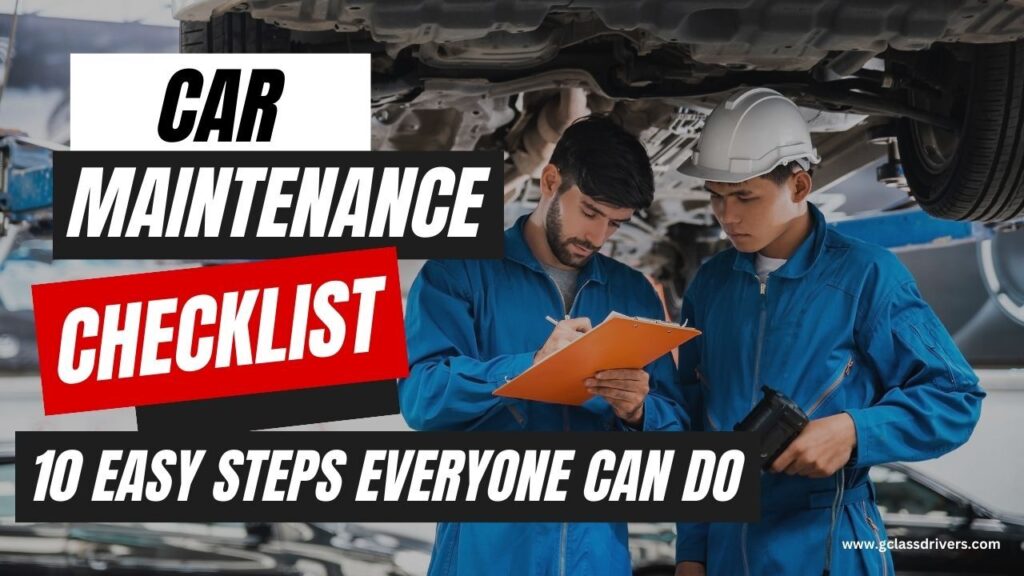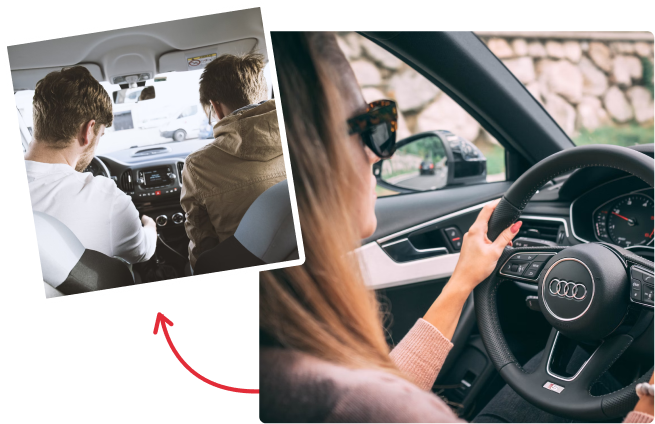Keep your ride in top shape! Learn how to take care of your car for smooth journeys, whether it’s working perfectly or has problems. We have a full car maintenance checklist to help you. It’s designed to make you feel confident while driving.
No one likes having to pay a mechanic. Maintaining your car is vital for its longevity and safety. Regular checkups are essential. Our car maintenance checklist offers a cost-effective way to care for your vehicle. This checklist ensures your car runs smoothly and remains in good condition. It minimizes engine strain and extends the lifespan of various components. Drive with confidence, knowing your car is well-maintained and reliable.
Following the regular car maintenance checklist won’t completely stop accidents, but a car that works well can keep you safer and save you money. So what maintenance does a car need? To maximize the performance of your car the given guide will help you.
Read also: How to Choose Driving Instructors?
Easy Steps for Vehicle Maintenance
Following are some important car maintenance checklists that will help you improve the performance and life of your motor vehicle:
Tyre Inspection
Checking your tires is really important. If your tires don’t have the right air inside, your car might not handle well. This can make it hard to turn or control your car. So, you should look at your tire pressure once a month. Also, before long trips or if you’re carrying heavy things. Remember, your spare tire needs checking too.
Every car is different, so check your owner’s manual or find out how much air your tires should have. Also, look at your tire’s treads which are basically the bumpy parts on the tire. This helps your car grip the road. New tires have a sign that shows when the treads are getting too worn. But you can also use a toonie coin. Put it in your tire’s treads:
- If the treads cover the bear’s paws on the coin, you’re good.
- If they cover half of the toonie’s silver part, your tires are half worn.
Check Battery, Headlights
Car batteries are important for running a healthy motor vehicle. Testing or changing the car battery is simple if you follow the right steps. Headlights in your car are crucial too, but sometimes we forget them. Once a month, turn on your headlights while parked in front of something flat. Check that both engine headlights work well and are in the right place. Walk around your car and look at the turn signals as well as the parking lights.
Check Engine Oil & Other Fluids
The next thing in the basic car maintenance checklist is checking oil levels and fluid levels. You can check the oil in your car using the dipstick or electronic gauge. If the oil looks very dark or muddy, it’s time for a change. Good oil is somewhat see-through and smooth. Your car’s manual will tell you the oil type and how often to change it. Synthetic oil lasts longer and is better than synthetic blends.
Cars have other fluids too. You can check them yourself. Washer fluid is the easiest, it runs out fast in winter, and you can fill it up easily. Engine coolant, antifreeze, and power steering fluid have dipsticks or gauges. For changing transmission fluid, it’s better to consult the manufacturer. Checking your brake fluid is also essential. When there’s not enough brake fluid, air can get into the brake lines, which makes the brakes feel soft.
Tires Rotate
Your tires wear out differently based on how you use your car and how it’s aligned. Rotating your tires means changing their positions. This makes them last longer because the wear is spread out better. It also stops noise and shaking. This will help the tires last longer and will also save you money. In car maintenance checklist rotating tires is important. If the tire tread is worn out in an uneven manner it can lead to car vibration which causes damage to the tires.
Air & Cabin Filters
The next step in the car maintenance checklist involves checking cabin and engine air filters. Air and cabin filters are important for your car. One keeps the engine safe, and the other keeps the air inside the car clean. The engine air filter stops dirt from getting into the engine. It also prevents things from the car’s inside going into the engine. The cabin filter stops dirty things from coming into the car through the air system. It blocks dust, smog, pollen, and mould. The cabin filter is usually easy to change, but the engine filter might be different depending on your car. If the filters are dirty, the engine has to work harder, which uses more gas. The car manual might tell you when to change the filters, or you can see for yourself. If your car smells strange when you use AC or heat, the cabin filter might be dirty.
Shocks & Struts
The shocks and struts in your car help handle bumps on the road. They’re important for steering. A pro should check them every 50,000 miles. If your car feels bumpy or hard to control, go to a shop. Shocks and struts are important to go through in your car maintenance checklist. They stop your car from bouncing too much and keep it steady. This helps prevent damage underneath your car and makes steering easier. When they work right, driving is smooth, your car is comfortable, and the wheels stay in the right position.
Spark Plugs
Spark plugs are important while going through your car maintenance checklist. With the help of spark plugs, you can know how well your engine works. Spark plugs can get dirty, and that makes the engine not function properly. You might need to change them if your car is slow when you press the gas. If your car’s engine is hard to start or makes weird noises, swap the spark plugs. There are various types of spark plugs, a few are copper, and others are made of iridium which stays good for a longer period of time. Iridium ones are better but cost more. You can find the spark plugs under the hood. When you check the spark plugs, they shouldn’t be covered in black stuff. If they are, you need to clean or change them.
Windshield Wipers
Wiper blades work hard, especially in thunderstorms or heavy rain. So, it’s important to make sure they are working properly. If you see water streaks after wiping, it might be time for new ones. You can try cleaning the rubber part with a cloth to see if it helps. Wipers come in standard sizes, depending on your car. The windshield wiper blades have two parts:
- The metal arm
- The rubber blade.
You might only need to change the rubber part, not the whole thing.
Serpentine Belts
Serpentine Belts should be one of the main things in your car maintenance checklist. Even though it looks like a plain rubber strip, your car’s serpentine belt is really important. It helps run things including the alternator, power steering, and air conditioner. Look at the belt to make sure it doesn’t have cracks or damage. If it does, change it or follow what your car’s manual says. Different car manufacturers have different recommendations on when to change the belts, so it’s better for a mechanic to do it. Still, you can look for some basic signs. If the belt is cracking, fraying, or getting loose, it might need to be changed soon.
Inspect Brakes
Make sure to check your car’s brakes regularly. While driving, listen for brake noises and feel if the brake pads shake or vibrate. If you notice any of these signs, go to a mechanic or repair shop soon. A professional will inspect your brakes. They’ll check the brake fluid, look under the car, and examine the brake parts like pads, rotors, and callipers. All these parts need to be good and working well for you to drive safely. Inspecting your car brakes should be a priority in your car maintenance checklist to avoid any accidents.
Conclusion
In conclusion, the car maintenance checklist can help you prevent accidents and can make your car safer. Thorough vehicle maintenance is an essential practice that directly contributes to the performance and longevity of your car. By paying attention to key aspects that include tire condition, engine oil and fluid levels, tire rotation, air and cabin filters cleanliness, spark plug efficiency, windshield wiper effectiveness, and brake system condition, you not only ensure your own safety but also extend the life of your vehicle. Neglecting these critical elements can lead to decreased fuel efficiency and costly repairs in the long run. Regular inspections help you resolve minor issues before they escalate into major problems. Ultimately, routine vehicle checks are a small price to pay that can save you from big issues. By following these guidelines, you can enjoy safer travels, smoother rides, and a more reliable vehicle for years to come.
Read More





